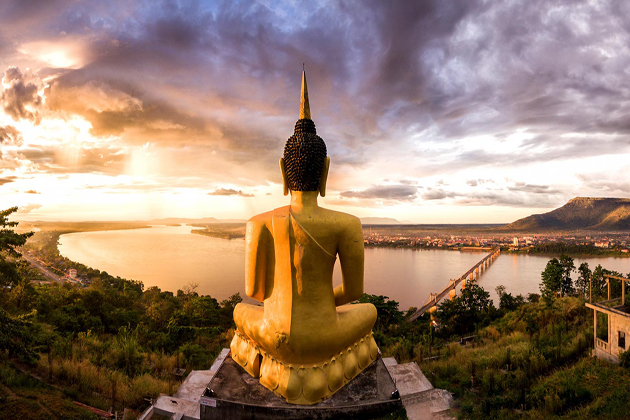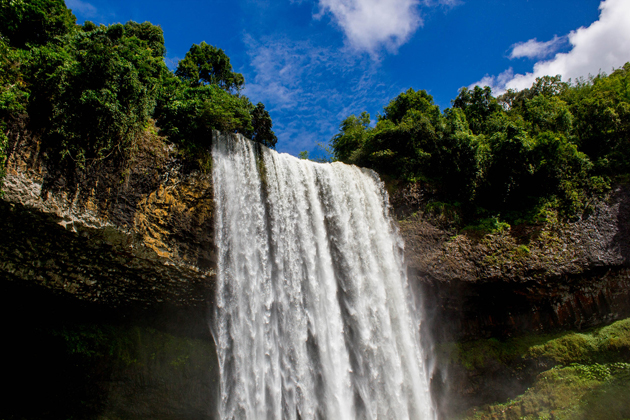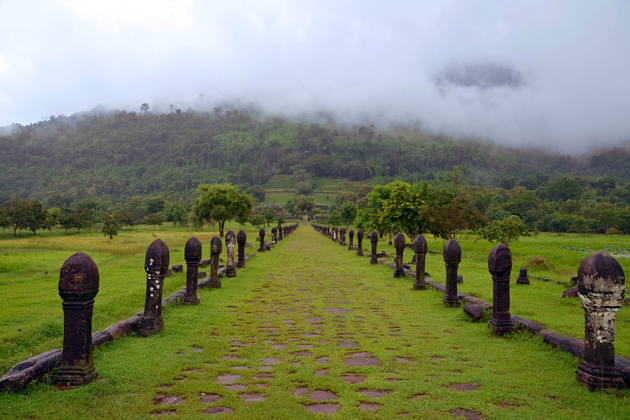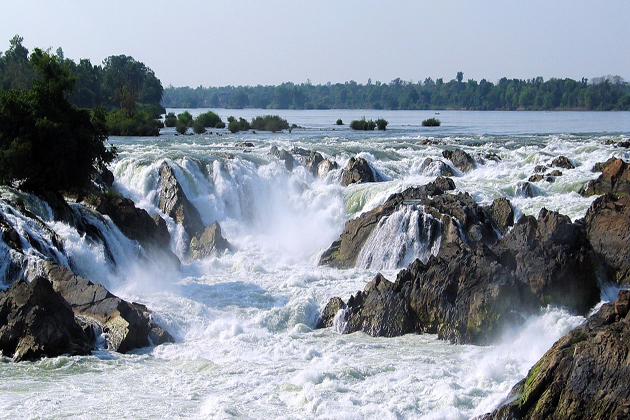Champasak has long been considered a hidden jewel of Laos with its ancient temples and majestic waterfalls. This southern province also contains interesting things that leave tourists unforgettable impressions. A visit to this destination will be absolutely worth your while during Laos tours.
Champasak Province – An Amazing Land in Laos
One of the provinces attracting tourists in Laos; Champasak has a population of about 50,000 and is divided into Pakse Town, Bolaven Plateau, Paksong, and Si Phan Don (Four Thousand Islands). This is the old capital of Champasak Kingdom with many tourist attractions such as Wat Phou, Si Phan Don, - Southeast Asia's largest waterfall Khone Phapheng.
Adjacent to Thailand and Cambodia, Pakse is located at the confluence of the Mekong River and is the provincial capital, which bridges the Japanese Bridge across the Mekong River, quickly developed into an important area. and is a popular tourist destination of Laos. The Mekong flows through the ancient Khmer temple at Wat Phu Champasak, before dispersing in the Four Thousand Islands, where it is a completely secluded area. The Bolaven Plateau is famous for its coffee, fruit, and cardamom. However, what is particularly attractive here is a large number of temples in the area, opening many discoveries for visitors.
Champasak Attractions
Bolaven Plateau
Situated in the northeast of Champasak Province, and located on parts of the Salavan, Attapeu, and Sekong Provinces, the Bolaven Plateau took Pakse as the main town for use as a base in Champasak.
This plateau is famous for its Bolaven Plateau & Tad Fane Falls, which is an impressive waterfall that falls over 100 meters above the steep cliffs of the canyon, and about several kilometers west of Paksong town. Besides the two waterfalls, the tropical rainforests of Bolaven are also introduced as a part of the large national park which is also home to many live wildlife species, including leopard, tiger, elephant, and monkey. Hornbeak is one of the 300 bird species found in this area.
Wat Phu Temple
The 1000-year-old temple is the symbol of Champasak cultures and architecture and built to express the Hindu beliefs about the relationship between nature and humanity. From the top of the mountain to the river, the temples and shrines were built and stretching about 10 km.
The temple was recognized World Cultural Heritage by UNESCO in 2001. Wat Phu was built in the 9th and 13th centuries before the Khmer were the holiest temple of the Khmer Dynasty moved to the south. Visitors are overwhelmed when traveling to Wat Phu by the population of this temple, the mountain temple prominent in the middle of the flat land. Although there were many devastated areas, the remnants left still make Wat Phu become the pride of the Lao people.
Phapheng Waterfall, Siphandone (Consists of the 4000 Islands in the Mekong River)
Anyone coming here is amazed by one of the largest waterfalls in Southeast Asia, flowing water straight up, white foam to clear up the air, forming loud roar loudly. The two sides of the waterfall are the immense four-season green forests. Champasak is also much-favored nature when there are also great waterfalls such as Tad Yuang waterfall, and so on.
Discussing travel experience in Champasak, people are probably impressed by the cuisine here. Tourists are warmly welcomed in a very natural way by the indigenous locals which are always willing to invite tourists to taste their specialties such as grilled fish or fish salad on the banks of the Mekong River with cold Laotian beer. Furthermore, you cannot miss the grilled banana baked in Laos, especially in the Pakse market. Visitors can easily find the stalls selling baked hot bananas from the grill.
Champasak Province - A Bright Spot in the Future
This year, Champasak is going to welcome 1 million visitors to come here. With the ancient capital of Luang Prabang, Vangvieng or the Xiengkhoang jungle field, Champasak is an indispensable highlight of many visitors to Laos. Therefore, the Champasak provincial government has developed a number of policies to develop tourism infrastructure to attract more and more international visitors to discover and experience at tourist sites in the province. Last year, there were nearly 800,000 visitors to Champasak and the smoke-free industry brought more than $ 120 million for Champasak province. Thanks to the development of Laos tourism as well as other related services such as Champasak accommodations and transportation, the province is expected to take a lead in attracting international tourists in the near future.




